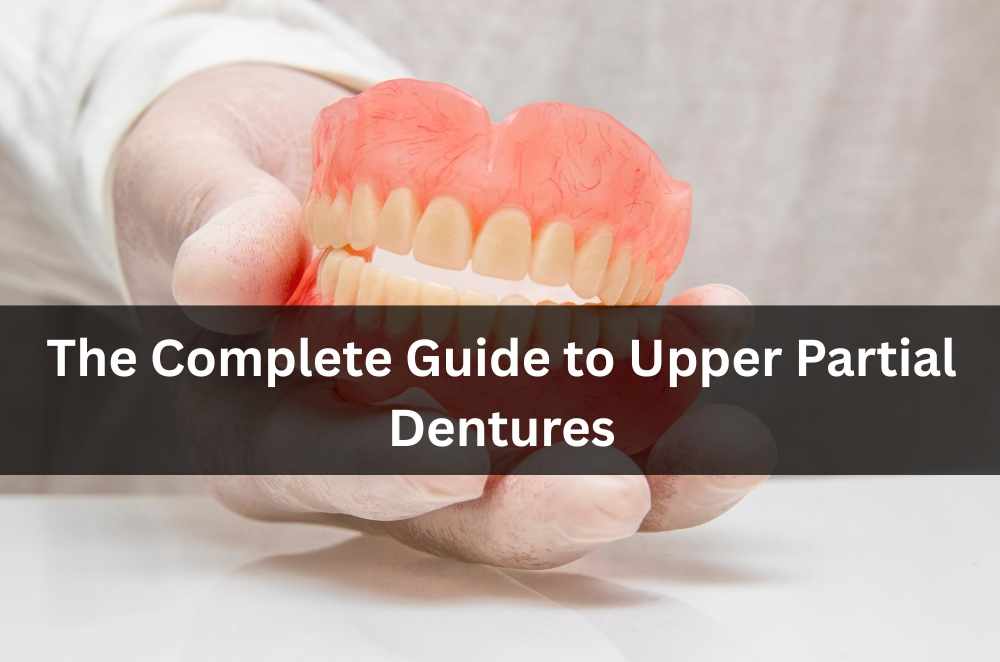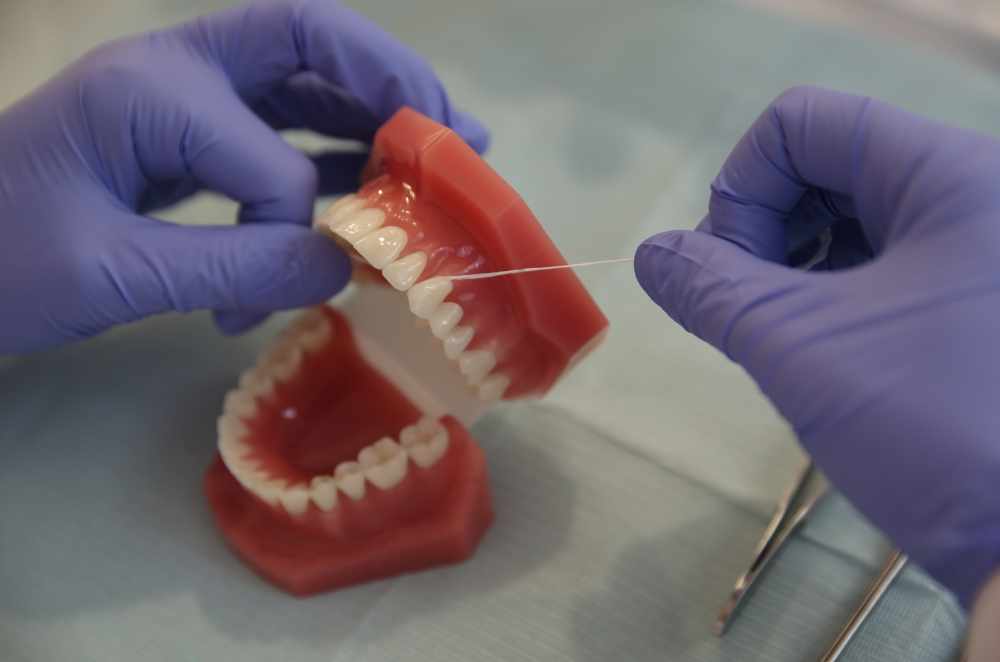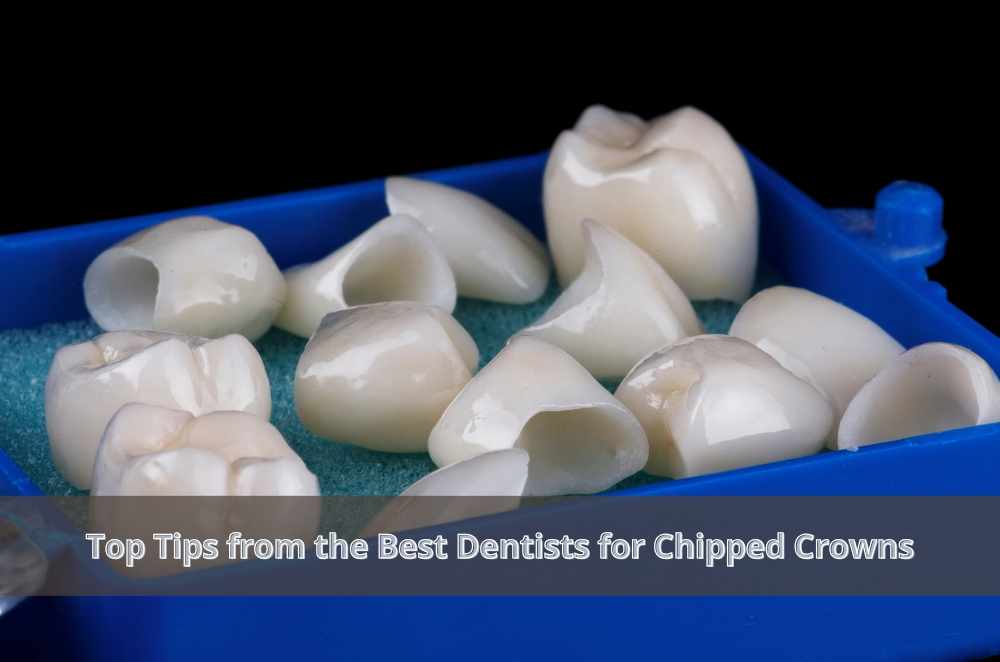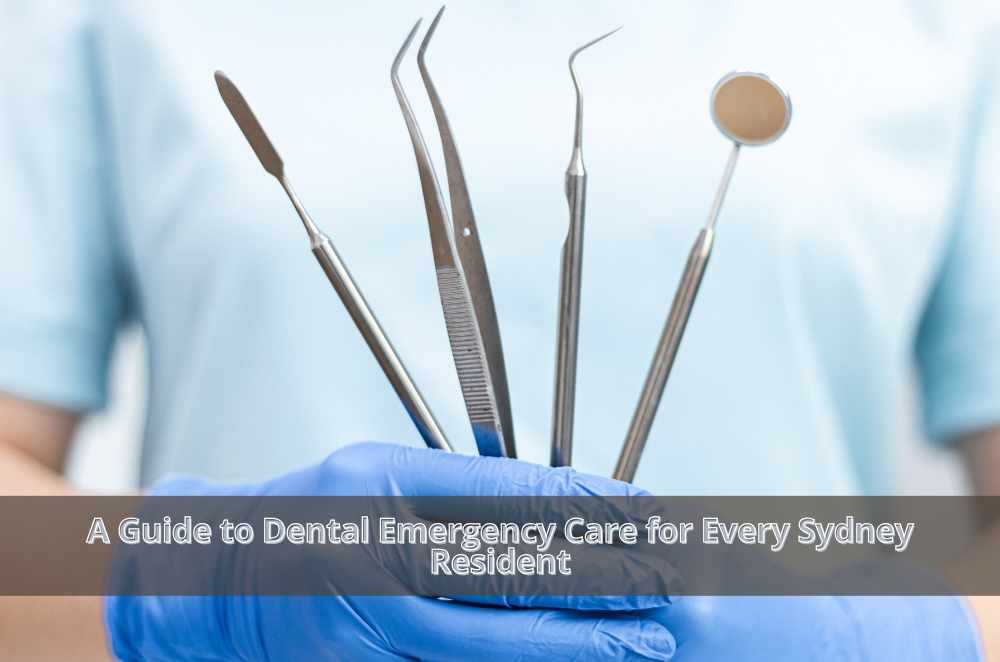
Missing one or more upper teeth can change how you chew, speak, and smile, and it often forces you to weigh comfort, strength, and cost at the same time. Upper partial dentures are designed to close those gaps while working around the teeth you still have. Modern plates feel lighter and less bulky than older styles when the palate is thinned and edges are polished. If day-to-day comfort sits at the top of your list, options for the most comfortable upper partial dentures frame choices without locking you into one material.
What are upper partial dentures?
An upper partial denture is a removable appliance that replaces a few missing teeth in the top arch. It anchors to remaining teeth or rests gently on gum tissue to restore bite balance and face support.
Core purpose: Replace missing teeth so chewing becomes steady without overloading the remaining teeth.
Main components: A gum-coloured base, artificial teeth, and connectors or clasps that stabilise the plate.
Fit objective: Even contact so the denture seats fully without rocking when you talk or swallow.
Natural look: Tooth shade and shape that match the smile line, with edges blended into the surrounding tissue.
Clear planning improves fit, and prevention habits protect the anchors that keep the appliance steady. Guidance on dental health sets out fundamentals that reduce soreness and extend appliance life.
Materials and design choices
Small design decisions produce big differences in feel. Thickness, clasp style, and bite contact often influence comfort more than the product label.
Acrylic base: Affordable and adjustable, though bulkier; commonly used as immediate or interim treatment.
Flexible nylon: Soft borders and gum-coloured clasps feel gentle for many wearers; repairs and additions are more limited.
Metal framework: Thin palate and high rigidity improve stability; planning is precise and cost is higher at the start.
Hybrid approach: Rigid skeleton with selected flexible elements balances strength, thinness, and appearance.
A slim palate can soften a faint lisp by freeing tongue space, while smooth borders reduce rubbing on sensitive tissue. Practical, stepwise responses to chips or cracks are outlined in dental emergency care to help decide what needs prompt attention.
Fitting and everyday comfort
Comfort grows from a loop of measuring, trying, and refining. Expect a handful of checkpoints where tiny edits pay off quickly.
Records and planning: Impressions or scans map the arch so clasp positions and palatal thickness can be set accurately.
Wax try-in: Tooth shape, shade, and bite are previewed so speech and pressure points are tuned before the final is made.
Delivery and tuning: Pressure marks guide micro-adjustments until the plate seats evenly without high spots.
First fortnight: Mild rubbing or extra saliva is common; brief reviews remove pressure points before habits form.
Broader considerations that shape expectations when getting dentures include timelines, comfort priorities, and how bite forces are shared.
Bite, speech and adaptation
The way forces travel across a plate and the space your tongue needs will shape daily comfort. Small, deliberate adjustments early on make speech clearer and chewing more even.
Balanced bite: Contacts are spread on both sides so one area does not fatigue; small polish changes can calm tight muscles quickly.
Palatal contour: A gently thinned palate leaves room for the tongue to form clear sounds, reducing whistle or lisp in the first week.
Clasp visibility: Tooth-coloured or tucked clasps can sit out of the smile line while keeping a reliable grip during meals.
Edge smoothing: Rounded, high-polish borders glide over the cheeks and lips, limiting hot spots that otherwise appear by day’s end.
Adaptation follows a curve: reading aloud builds new tongue patterns, and chewing soft foods on both sides resets balance before you advance to textures. Scheduled check-ins in the first fortnight fine-tune comfort so the plate feels ordinary in daily use.
Timelines and practical costs
Timing and budget vary with material, number of teeth replaced, and the precision required for the framework. Clear discussion at the outset helps match expectations to the process.
Typical sequence: Consultation, records, wax try-in, and delivery, with a quick review to smooth pressure points so the plate settles fast.
Time frame: Many cases are completed in two to four weeks, though immediate plates after extractions can stretch the schedule when healing guides decisions.
Cost drivers: Framework choice, clasp complexity, and lab time influence fees more than the count of replacement teeth alone in many situations.
Cover and rebates: Private extras cover and public programs differ widely; itemised quotes make claims and waiting periods easier to navigate.
Short, focused appointments at key stages prevent surprises, and planning for a possible reline in the first year keeps long-term fit predictable. Keeping a simple log of visits, adjustments, and costs also clarifies value and helps future tune-ups move quickly.
Care, maintenance and lifespan
Clean hardware and healthy tissue make any design feel better for longer. Gentle routines protect the anchors that hold the appliance steady.
Daily cleaning: Rinse after meals; brush the plate out of the mouth with a soft brush and mild soap, avoiding gritty toothpaste that scratches surfaces.
Night routine: Remove the denture, clean the mouth, and soak the appliance in a recommended cleanser so biofilm does not harden overnight.
Protection habits: Chew on both sides, limit very sticky sweets, and consider a guard if clenching is likely, especially if teeth feel tired by evening.
Review schedule: Regular checks pick up looseness, worn teeth, and sore spots before they become problems, keeping adjustments small and quick.
Relines refresh the fit when gums change shape, repair handle chips, and eventually remake the plate as needs evolve. Storing the appliance in fresh water away from heat also preserves shape and keeps the fit consistent.
Living well with an upper partial

Comfort with an upper partial blends design, fit, and routine rather than any single material. Begin by clarifying the role you want it to play, whether closing a front gap for confident speech, restoring solid chewing at the back, or holding space while other treatment unfolds. Then weigh thinness against flexibility, clasp visibility against grip, and speed against precision, recognising that small refinements after delivery often create the biggest improvements. Expect a short settling period measured in days as the tongue adapts to a slightly new landscape, and use follow-ups to smooth sore edges before they change how you chew. Keep cleaning simple and consistent so edges glide and anchors stay strong, and plan occasional relines as your mouth changes with time, health, or dental work. By matching the design to your anatomy and habits, and by maintaining it with a light, steady routine, the plate becomes ordinary enough to forget while you get on with everyday life.








Write a comment ...